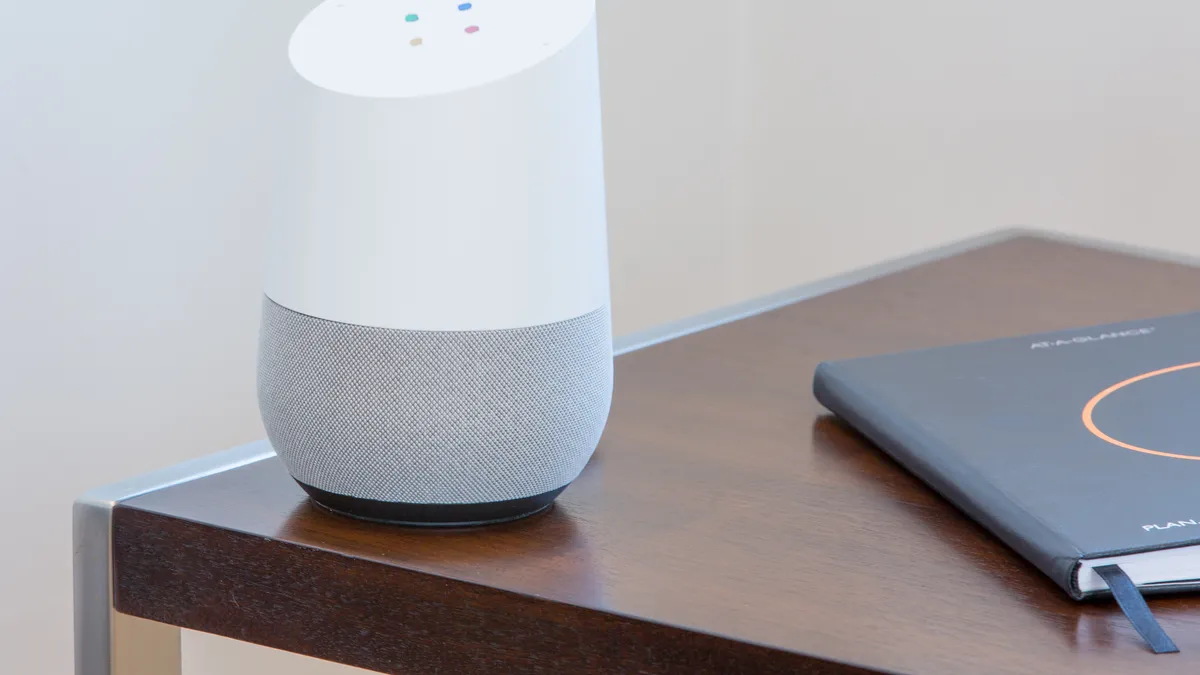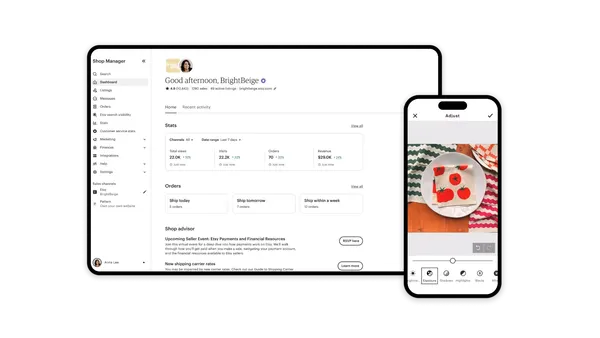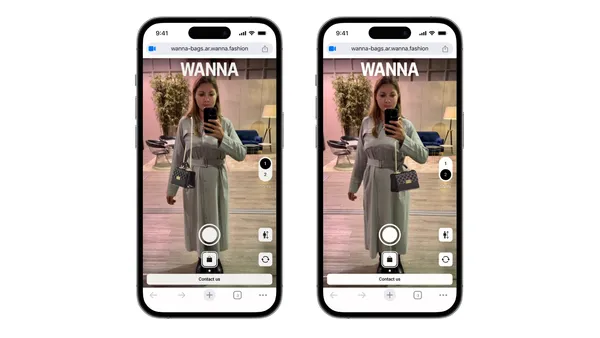Substantial strides have been made this year in technology used in the retail space. Voice-powered and text-enabled shopping has taken further shape, retailers have employed technology to expand store concepts and cashierless shopping experiences have grown exponentially.
We've compiled a list of the top technology stories that shaped retail this year:
-
Asos debuts voice-powered shopping on Google Assistant
Asos launched a voice-powered shopping assistant, named Enki, through Google Assistant earlier this year. Shoppers in the U.S. and U.K. enable the feature by saying, "Hey, Google, talk to Asos" to a Google Home smart speaker or the app on Android or iOS. In addition to voice commands, the feature also accepts texts, which results in customers being able to discover new clothing items on the site. Enki also includes a feature called Style Match, a visual search component, which allows shoppers to find products by uploading images from their phone or the internet.
2018 saw retailers exploring the voice-powered shopping and visual search landscapes. Earlier this year Google launched Shopping Actions, which can be connected to Google smart home devices, to minimize the friction points in making purchases. Best Buy, Sephora and Nike are among the retailers included in the unified shopping cart capability integrated on the Google devices. Furthermore, Farfetch teamed up with Syte earlier this month to enable a visual search option for consumers using the online luxury fashion retailer's app.
-
Walmart unveils click-free shopping service for upper-income New Yorkers
Walmart unveiled its member-exclusive text-to-shop service, Jetblack, earlier this year. The service is aimed toward upper-income New Yorkers and users must have a doorman in their building to receive deliveries. Through a combination of artificial intelligence and human knowledge, the service allows members to text questions or requests to the service in order to have items shipped directly to their homes. The personal shopping service costs $50 a month (although that price may be evaluated upon its growth), and includes a variety of features from gift wrapping and delivery, to visual search by texting images to Jetblack to purchase.
Walmart's push into the e-commerce space became evident back in 2016 when it acquired online retailer Jet, so exploring text-to-shop technology to further promote its online presence seemed fitting. The retailer has also made major moves in tech this year such as launching an in-store shopping app for store associates, curating plans for an in-store AI lab and a relaunch of its e-commerce site, Walmart.com.
-
Macy's and b8ta partner on concept shops
Macy's announced in June its partnership with retail concept firm b8ta, which includes b8ta shop-in-shops and also benefits Macy's marketplace pop-up The Market @ Macy's, which launched in February. The technology tested new size formats through b8ta's technology as well as expanded the size of some existing spaces. The partnership will make it easier for brands to participate in the marketplace because b8ta will help Macy's customize its platform further.
"Once Macy's began to free itself from the tyranny of sales and profit per square foot of floor space and instead began to create and measure 'experiences per square foot,' their stores could become the most powerful media channel they have at their disposal, driving sales and customer advocacy across channels," Doug Stephens, retail futurist and author, told Retail Dive in an email at the time.
The move to improve technology supporting The Market @ Macy's came around the same time the retailer acquired the store concept Story in New York City, which indicates the importance of store concepts and shop-in-shops to retail, especially to department stores. Putting a greater focus on the technology within their stores and how that interacts with the customer experience is also a good move for Macy's, according to Maya Mikhailov, co-founder and chief marketing officer of GPShopper.
"What you're seeing is a proliferation of technology around physical in-store experience analytics and point-of-sales that are all converging with the customer's mobile device," she said at the time. "Macy's is becoming more sophisticated with digital technology. They were always sophisticated, and this is a smart evolution."
-
Amazon picks 2 Chicago sites for Go stores
Amazon in June announced plans to expand its Go locations to Chicago, into the city's iconic Willis Tower (formerly the Sears Tower) and Ogilvie Transportation Center — two locations with no scarcity of foot traffic. Amazon Go has since expanded to 10 locations in Seattle, Chicago and San Francisco, with an additional location being added to the Illinois Center in Chicago in 2019.
With the launch of the company's first cashierless location in Seattle at the beginning of the year, it seems that the "Go" train has done anything but slowed down. Most recently, Amazon has reportedly been looking into airports as potential locations for the cashierless stores, per a Reuters article. And Amazon isn't alone in exploring cashierless technologies. Walmart offered "Scan & Go," which gave shoppers the ability to scan barcodes for the items they want to buy within an app and show the in-app receipt to a greeter upon leaving a store, but the program was shut down in May due to a lack of use. Since then, however, the retailer unveiled a Sam's Club store concept which included the technology. Additionally, Kroger has been utilizing its "Scan Bag Go" effort for almost six years in some locations.
-
Whole Foods' inventory system crushes employee morale
A new "order to shelf" inventory system caused several Whole Foods locations nationwide to have empty shelves leading to low morale. The inventory system predated Amazon's acquisition of the grocery chain last August. As part of the system, Whole Foods implemented a scorecard system to ensure employees followed the new protocol and system accordingly. But Business Insider reported in February that the technology was "stress-inducing" for staff.
Although the system predates Amazon's acquisition of Whole Foods, the e-commerce giant has had a slew of its own employee complaints over the years and has been scrutinized for how it treats employees in the past. Amazon reportedly installed big-screen monitors to display former employees stealing on the job, which resulted in their terminations. The company also employed a "rank-and-yank" employee review system, which has since been overhauled. The system rewarded employees who praised themselves while tearing down their peers, and it penalized employees who were not as keen to self-promotion and didn't want to complain about others.
However, this points to a larger trend of retailers finding the sweet spot of integrating technology that will benefit both the employee and the consumer. A recent Zebra Technology study found that nearly two-thirds of the 1,200 retail store associates surveyed felt they could provide better customer service and create an overall better shopping experience if they were equipped with tablets. Placing importance on employee comprehension of the technologies could help ease the transition for future tech integrations.













